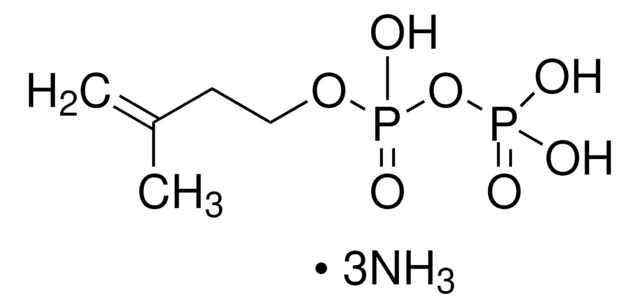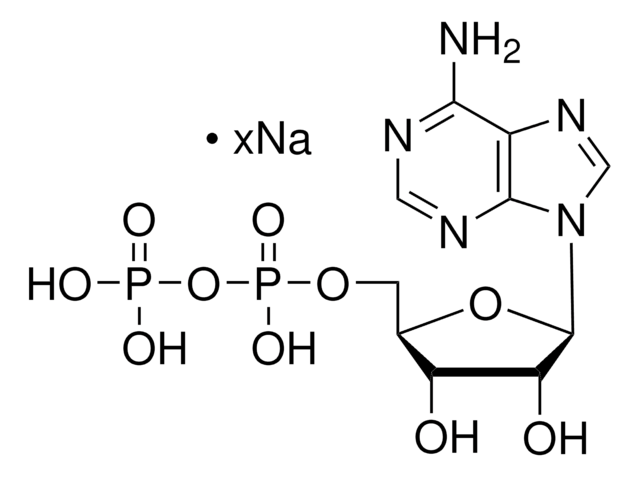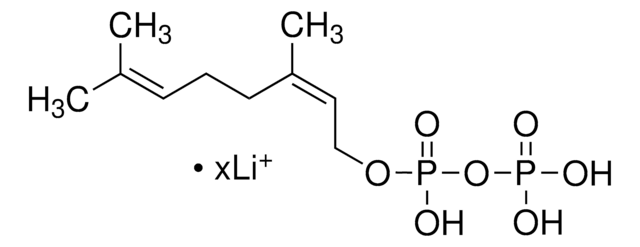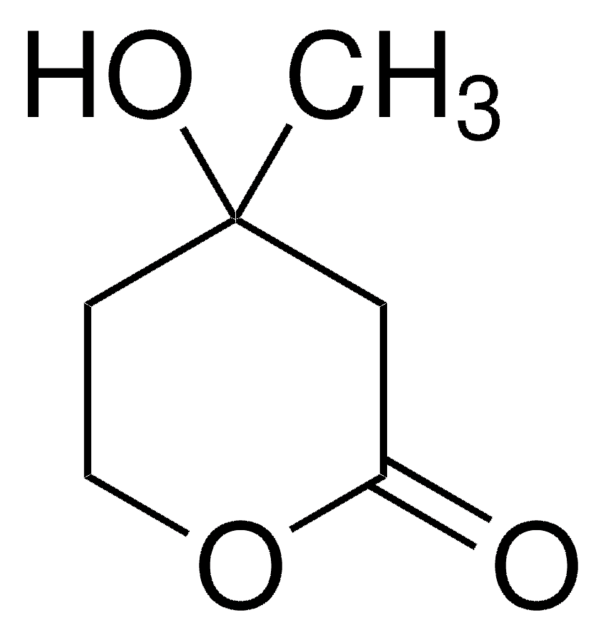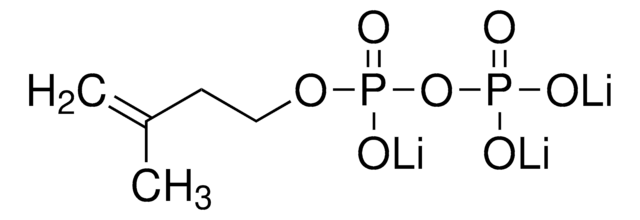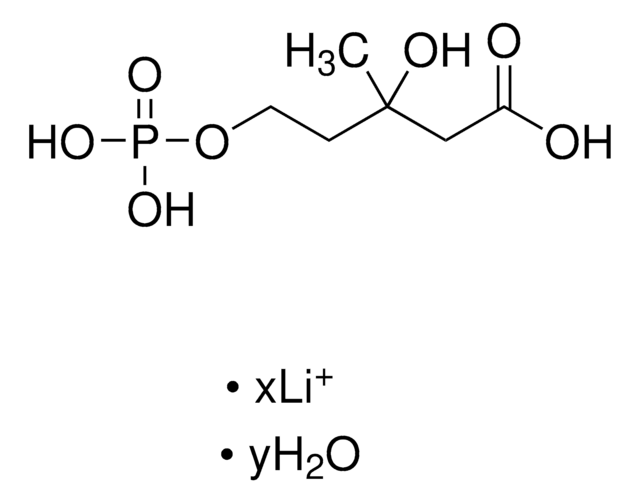F6892
Farnesyl pyrophosphate ammonium salt
methanol:ammonia solution, ≥95% (TLC)
Sinônimo(s):
3,7,11-Trimethyl-2,6,10-dodecatrien-1-yl pyrophosphate ammonium salt, FPP
About This Item
Produtos recomendados
Ensaio
≥95% (TLC)
forma
methanol:ammonia solution
embalagem
vial of 200 μg
temperatura de armazenamento
−20°C
cadeia de caracteres SMILES
C\C(C)=C\CC\C(C)=C\CC\C(C)=C\COP(O)(=O)OP(O)(O)=O
InChI
1S/C15H28O7P2/c1-13(2)7-5-8-14(3)9-6-10-15(4)11-12-21-24(19,20)22-23(16,17)18/h7,9,11H,5-6,8,10,12H2,1-4H3,(H,19,20)(H2,16,17,18)/b14-9+,15-11+
chave InChI
VWFJDQUYCIWHTN-YFVJMOTDSA-N
Informações sobre genes
rat ... Fnta(25318)
Descrição geral
Aplicação
- as a prenylation agonist in human osteogenic sarcoma cells in collagen-based cell invasion assays
- in the prenylation of the hepatocyte growth factor (HGF) in human umbilical vein endothelial cells (HUVECs)
- as a substrate in prenyltransferases assay in diatom Haslea ostrearia
Ações bioquímicas/fisiológicas
forma física
Actual concentration given on label
Palavra indicadora
Danger
Frases de perigo
Declarações de precaução
Classificações de perigo
Acute Tox. 3 Dermal - Acute Tox. 3 Inhalation - Acute Tox. 3 Oral - Aquatic Chronic 3 - Eye Irrit. 2 - Flam. Liq. 2 - Skin Irrit. 2 - STOT SE 1
Órgãos-alvo
Eyes,Central nervous system
Código de classe de armazenamento
3 - Flammable liquids
Classe de risco de água (WGK)
WGK 2
Ponto de fulgor (°F)
60.8 °F
Ponto de fulgor (°C)
16 °C
Certificados de análise (COA)
Busque Certificados de análise (COA) digitando o Número do Lote do produto. Os números de lote e remessa podem ser encontrados no rótulo de um produto após a palavra “Lot” ou “Batch”.
Já possui este produto?
Encontre a documentação dos produtos que você adquiriu recentemente na biblioteca de documentos.
Os clientes também visualizaram
Artigos
Terpenes comprise the largest and most diverse class of secondary metabolites; approximately 55,000 compounds have been identified to date.
Biosynthesis of cholesterol generally takes place in the endoplasmic reticulum of hepatic cells and begins with acetyl- CoA, which is mainly derived from an oxidation reaction in the mitochondria. Acetyl-CoA and acetoacetyl-CoA are converted to 3-hydroxy- 3-methylglutaryl-CoA (HMG-CoA) by HMG-CoA synthase.
Nossa equipe de cientistas tem experiência em todas as áreas de pesquisa, incluindo Life Sciences, ciência de materiais, síntese química, cromatografia, química analítica e muitas outras.
Entre em contato com a assistência técnica

